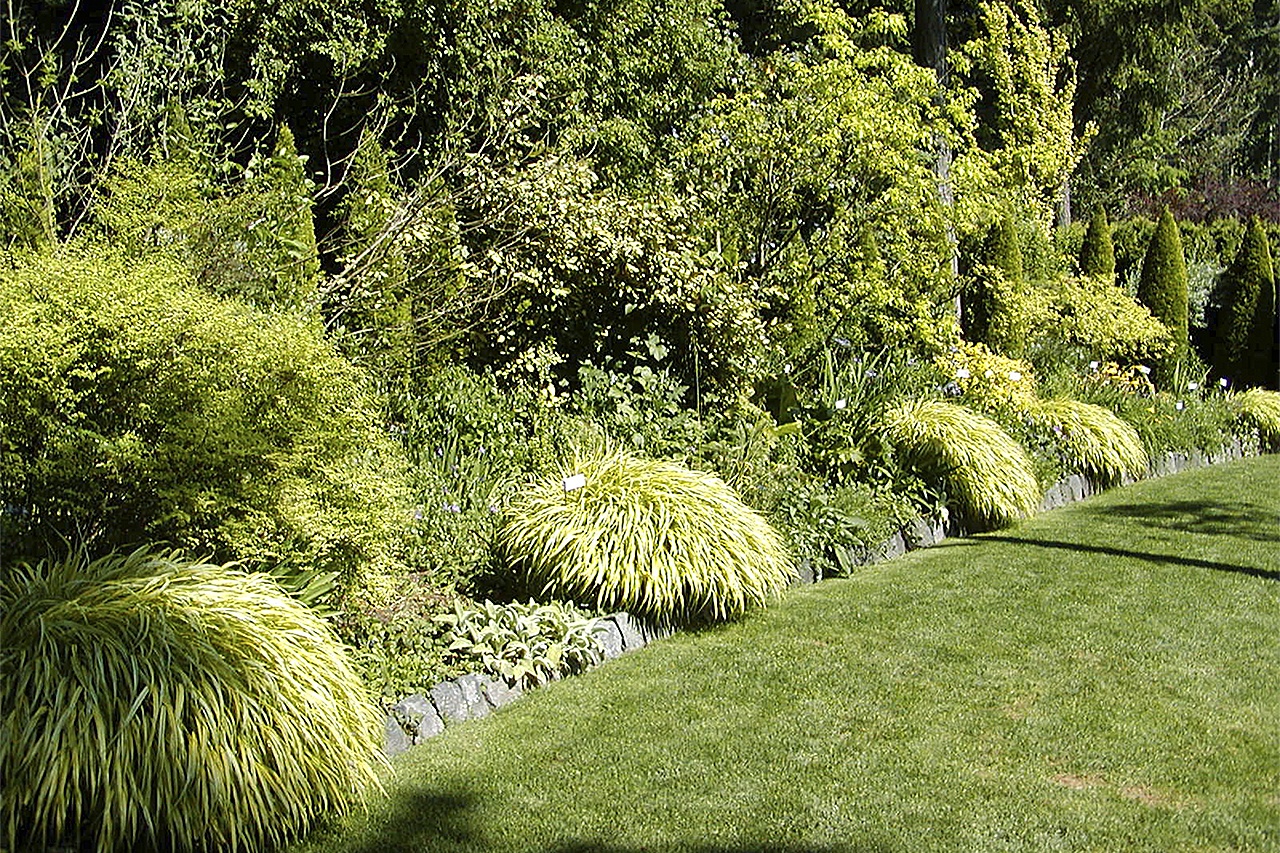The use of ornamental grasses in our Pacific Northwest gardens has been popular for nearly 40 years. Grasses came to the forefront in the mid-1970s, when the work of the East Coast landscape-design firm Oehme van Sweden featured the “New American Garden.” Their style incorporated swaths of sedges, rushes and true grasses, giving a new dimension to gardens worldwide. From their inspiration, not only can we enjoy the sight of grasses waving in the breeze as they add texture to our plantings, they often offer a unique winter focal point in the garden with their flowers, commonly called “inflorescences.”
Ornamental grasses are by and large disease-free. Most flourish in full to partical sun, though sedges and feather reed grass will grow in either sun and shade/semi-shade. The Japanese forest grass is both a sun-and shade-lover, lighting up the darkest parts of your garden.
This time of year, there is the quandary whether one should prune ornamental grass. For many grasses, it is definitely time to trim them close to the ground. For others, it’s time to comb out them out, so that they may start the new growing season with a fresh look.
Here is a look at how to ready ornamental grasses for the year ahead.
Short grass that goes dormant: These include Japanese forest grass (Hakonechloa) switch grass (Panicum) and fountain grass (Pennisetum). It’s almost too late in February to prune these grasses, but grab your hedge sheers and cut them back to around three inches.
Large grass that goes dormant: Tall grasses in this category are Maiden grass (Miscanthus) and feather reed grass (Calamagrostis). Like their smaller cousins, these grasses deserve a haircut in February.
Before you start to work on these plants, be sure you are well-protected from the blades’ sharp edges. Wear a long-sleeved shirt and sturdy gardening gloves. Tie the grass as if you are creating a ponytail, either as one large pony tail or several smaller, depending on the size of the clump. Sometimes a bungie cord works as an easy ponytail holder. Using either hand or powered pruning shears, cut to within about ten inches of the grass’s base.
Grass that is small and stays evergreen: Sedge (Carex), sweet flag (Acorus), blue oat grass and black mondo grass (Ophiopogon) are grasses we frequently grow in this group. For the most part, these grasses are in need only of a combing to pull out the dead blades within the mound. Instead of using heavy gardening gloves, put on a pair of dishwashing latex or rubber gloves. Comb your fingers through the plant. Most will cling to your rubber gloves and be easily removed.
Large grass that stays evergreen: Giant pheasant’s tail grass (Stipa gigantea), flax (Phormium), cordyline (Cordyline), and yucca (Yucca) comprise this group. The giant pheasant tail grass only requires a combing, like its shorter cousins, along with removal of last year’s flower stalks. Whenever you work with these spiky plants, be sure to wear eye protection.
You may — or you may not — want to cut the dead blades of the flax, cordyline or yucca all the way to the base. If you trim, know that you eventually may have a long-necked monster. At that point, if you are willing to work through the plant’s awkward stage, do cut it back by one-third and wait for it to sprout again, either from the stem or from its base.
Ornamental grasses of all kinds are easily found in our local nurseries. Consider trying several different kinds for them for added color, texture and movement in your garden.
Sources for this article include information from the website North Coast Gardening – Gardening in the Pacific Northwest.
Mary Shane is a WSU Master Gardener who lives just west of Montesano.


